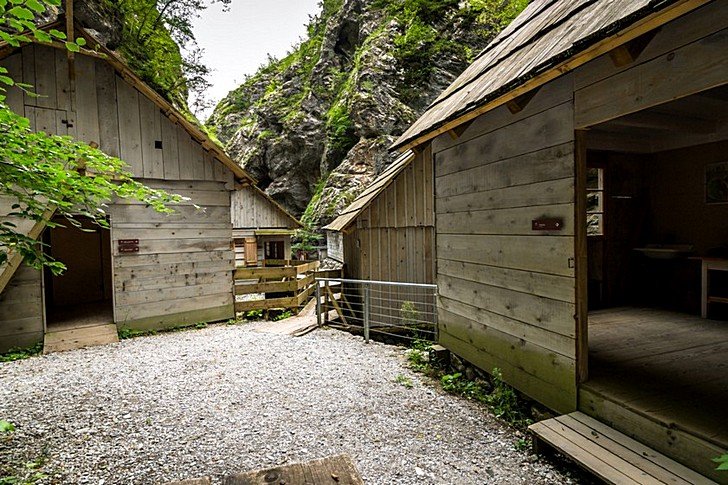The small Central European country of Slovenia attracts with an abundance of medieval castles and churches. Old towns surprise with various architectural styles, ranging from crude Romanesque to elegant Rococo. Slovenes treat all these centuries-old buildings with care, trying to preserve the atmosphere of the ancient heritage.
The uniqueness of the local nature in contrast. Without leaving the country, you can soak up the beach of the Adriatic Sea, and after a couple of hours - skiing on the alpine slope. Also, nowhere in Europe can one find such an abundance of unique karst rocks that form interesting natural monuments.
People come here to improve their health, both physical and mental. Glorified by thermal springs, Slovenia attracts tourists with professional medical resorts. The protected areas formed on the territory of the country preserve the picturesque landscapes of crystal clear glacial lakes, impregnable waterfalls and luscious alpine meadows in their original form.
What to see in Slovenia?
The most interesting and beautiful places, photos and a brief description.
- Lake bled
- Postojnska Pit
- The mining town of Idrija
- Predjama Castle
- Skocjan Caves
- Vintgar Canyon
- Piran city
- Ljubljana Old Town
- Kras limestone plateau
- Bled castle
- Valley of the river Soča
- Stud farm in Lipica
- Ljubljana castle
- Triglav National Park
- Bohinj lake
- Logarska valley
- Otočec Castle
- Ski resort Bohinj
- City of Kranj
- Celje Castle
- Tivoli Park in Ljubljana
- Franja Partisan Hospital
lake bled
The reservoir, located among the mountain peaks in the north-west of Slovenia, has the only islet with the chapel of the Assumption as its main attraction. The Wishing Bell, surrounded by legends, is placed there. You can see the picturesque beauties of the mountain lake from the water surface, moving on special boats "pletny".

Postojnska Pit
An ancient system of karst caves from the Slovenian region of Notranjska Kraska, formed by the Pivka River. The walls of the cave, created by the oldest limestone rocks, maintain a temperature of 10 degrees all year round. In addition to stalactites and stalagmites, frozen in various forms, a large flow of tourists lures an aquarium with an exceptional amphibian - "human fish".
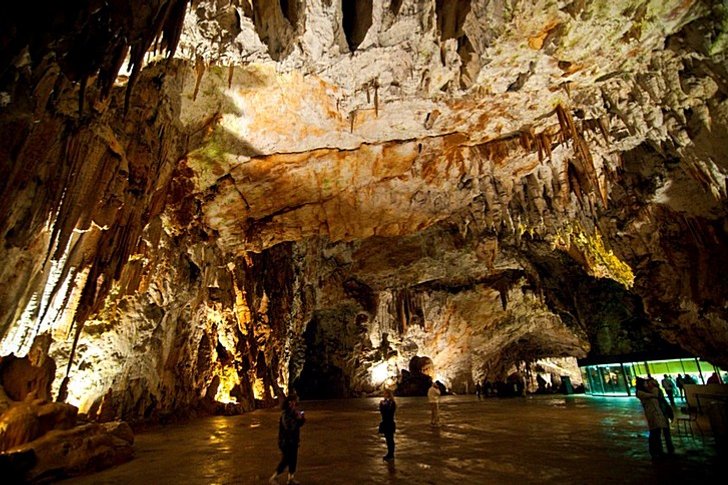
The mining town of Idrija
The discovery of a local peasant, who discovered glimpses of mercury in the water from the well, gave impetus to the creation of a mining town on the site of former farms. The most popular places in the industrial corner of Slovenia are the mercury mines and the best technical museum, nestled in Gewerkeng Castle. Idrija is also famous for its unusual lace and juniper vodka.
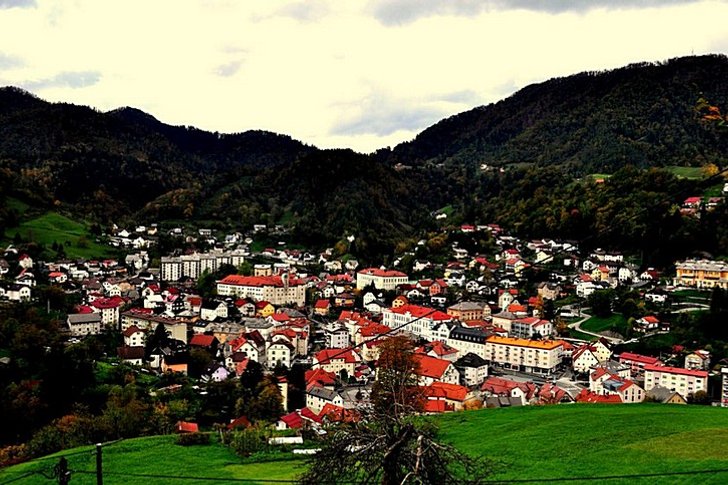
Predjama Castle
The unique property of the knight Erasmus rests on a 123-meter rock and is the undisputed winner in terms of audacity and unusual structure among similar buildings. Predjama Castle surprises with the courage of the creators who managed to build a structure from rock. Inside the fortress there is a museum that has preserved the rooms and household items of the owners in their original form.
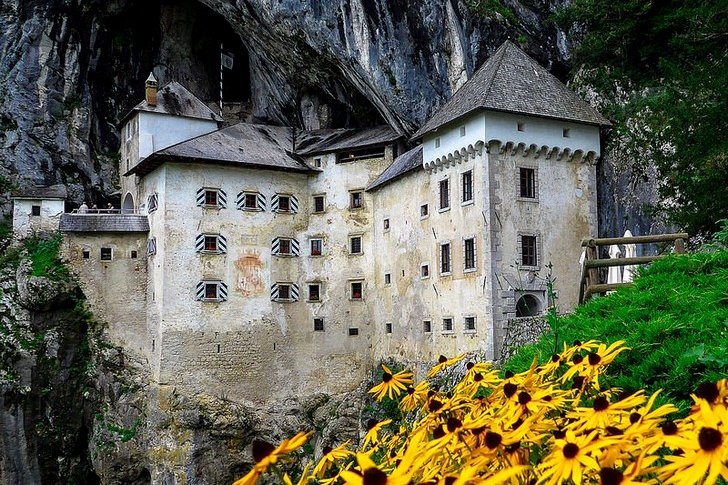
Skocjan Caves
A miraculous miracle in the form of systems of tunnels and halls formed by the flow of the river is located in the southwest of Slovenia. The caves stretch for six kilometers and attract tourists with low underground waterfalls and unusual karst failures. Among the special attractions is the River Canyon with a natural formation called the Church Bridge, hanging over the water at 45 meters.
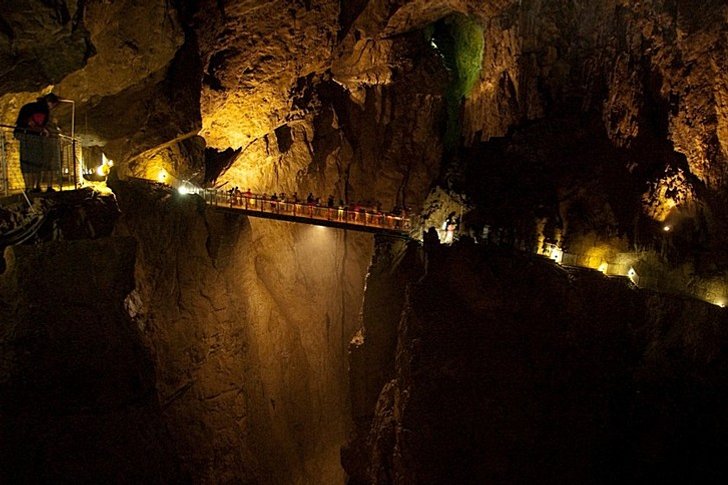
Vintgar Canyon
The mountain river Radovna has formed an interesting alpine corner four kilometers from Lake Bled. The Vintgar Canyon was impassable until 1891, when Jakob Zumer, together with the cartographer Lergetporer, explored an unknown place. On the way through the picturesque gorge, you can admire the numerous rapids and whirlpools. The path is laid along wooden walkways leading directly to the sixteen-meter Noise waterfall.
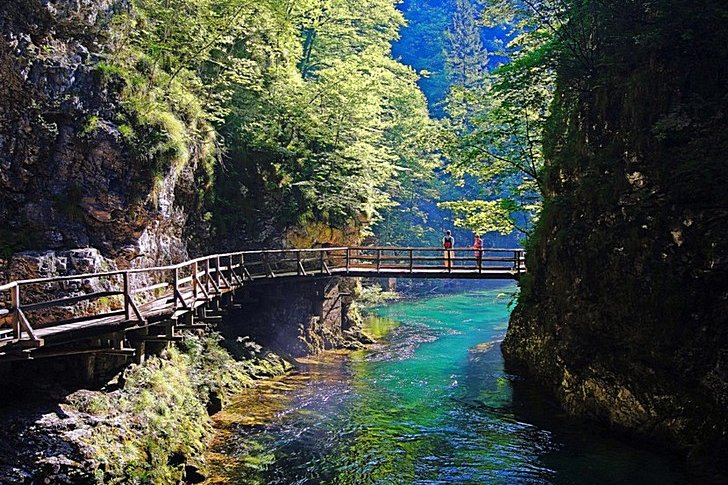
Piran city
The Slovenian resort town, washed by the Adriatic Sea, is saturated with the Italian atmosphere. The local "little Venice" attracts tourists with its medieval flavor. The absence of modern buildings contributes to securing the status of a museum city for Piran. Ancient architectural monuments are scattered all over the place, among them the monument of the violinist Tartini and the church with a tower, which offers a breathtaking view of the city.
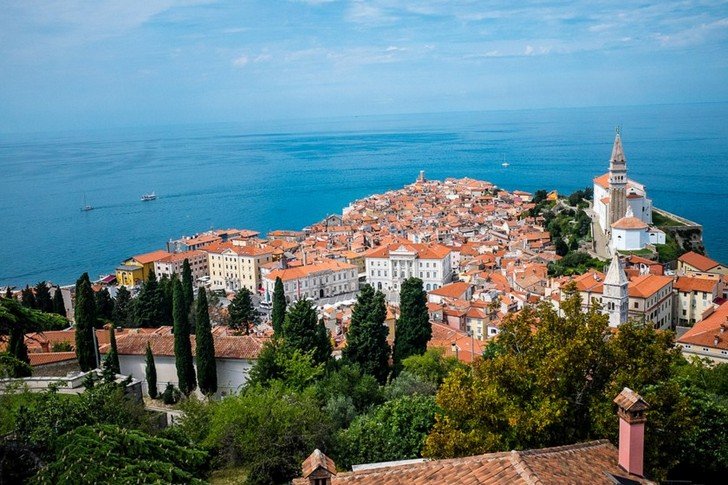
Ljubljana Old Town
The old part of the capital of Slovenia is located on the right bank of the Ljubljanica. You can enjoy the beauty of architecture from the famous castle - Ljubljana Castle. Pershen and Upper squares attract with the atmosphere of the Middle Ages, and the famous Jože Plečnik's bridges decorated with dragons delight tourists with their eccentricity.

Kras limestone plateau
The plateau stretches in the northwest of the Dinaric Highlands and is famous for its well-developed karst phenomena. Carbonate rocks contribute to the formation of funnels, basins, caves, wells and disappearing rivers. These unusual properties of limestone soil allow only grapes to be cultivated. The villages formed in this area keep architectural monuments of the 16th century in the form of churches and bell towers.
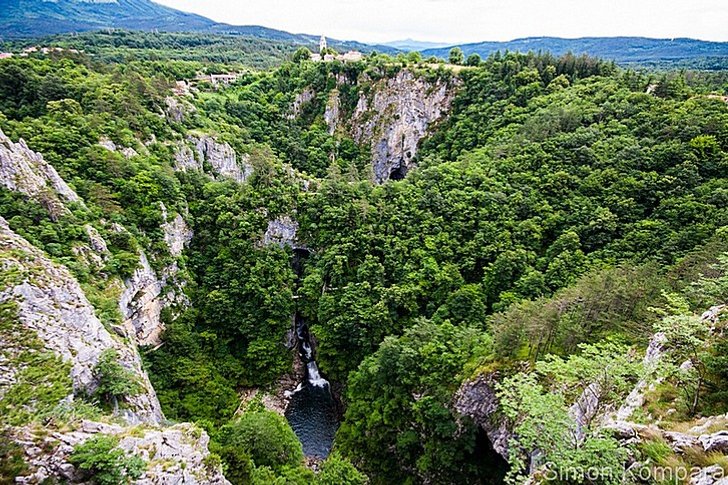
bled castle
In the Middle Ages, it was a mighty fortress, and now it is a bewitching observation deck on the glacial Lake Bled. The castle rises on a 130-meter cliff, it is one of the oldest buildings in Slovenia. The former residence of the monarchs today houses the museum of the historical development of the city of Bled. Among other things, a winery and a gallery of herbs are open to visitors.
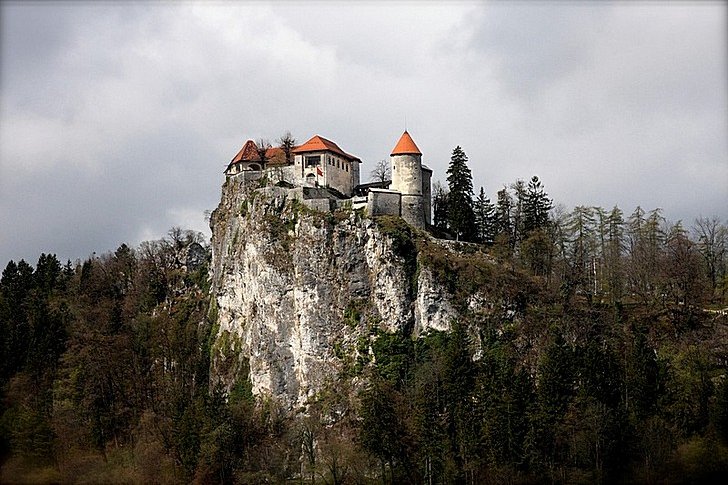
Valley of the river Soča
The river takes its source in the Trent valley and, descending through the Julian Alps, flows into the Adriatic Sea in Italy. Due to the unusual color, the locals called the alpine river "emerald beauty". The impeccably clear waters of Sochi have become home to the rare Marble Trout and other fish that attract fishermen. The fame of the river was also brought by the record-breaking railway bridge Solkan.

Stud farm in Lipica
The famous Lipizzan horses come from an estate an hour's drive from Ljubljana. The Lipizzansky stud farm was founded in the 16th century, and now continues to supply a unique breed of horses. At birth, the foal has a dark color, brightening over time to snow-white. In addition to the local pets, the estate has a collection of various carriages and wagons, carefully assembled by a local loudspeaker.
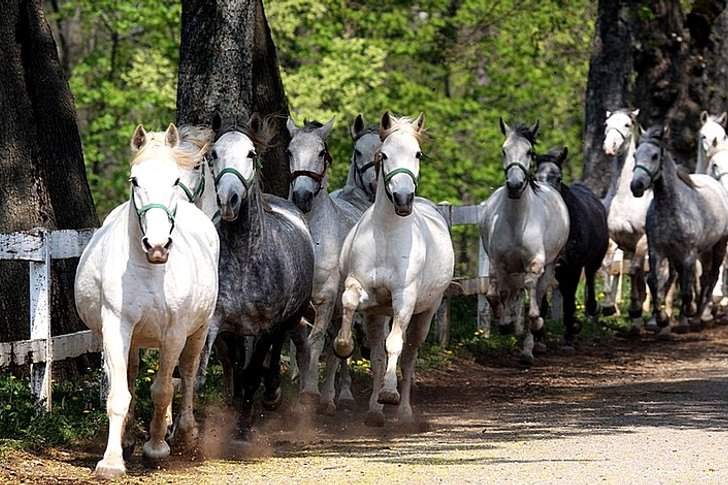
ljubljana castle
The highest point of the city shows a panoramic view of the Slovenian capital. Having begun existence in the ninth century, the castle has acquired a rich history. From the residence of the princes, Ljubljana Castle turned into a city prison, and only after reconstruction in 2000 was it opened for tourists. The Virtual Museum located inside tells the story of the city of Ljubljana, and the upper floor with its loopholes demonstrates directions to world capitals.

Triglav National Park
Triglav, the highest point of the Slovenian Alps, gave its name to a nature reserve in the northwest of the country. A strict security regime does not allow tourist construction, preserving the originality of local beauties. The protected area attracts hiking and skiing on the diverse mountain slopes. The summer months will please sports fans with rafting, hydrospeed and other types of water extreme sports.
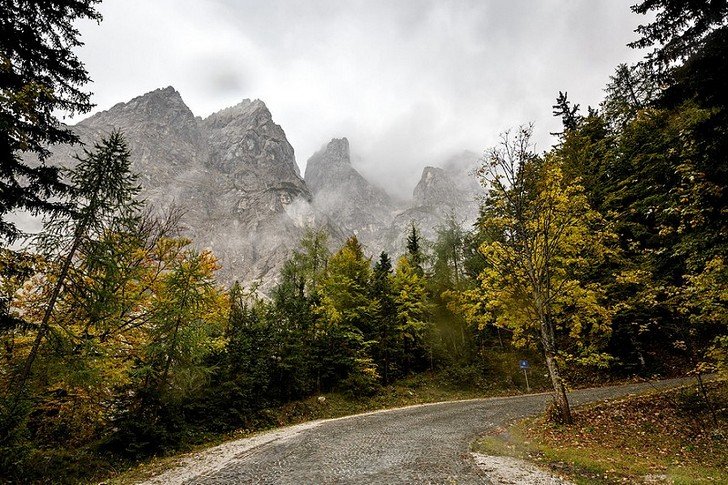
Bohinj lake
The largest glacial lake in Slovenia belongs to the protected area of Triglav. The area of Bohini attracts seekers of active water recreation or those who want to swim in the transparent surface of the reservoir. Savica flows out of the lake - a small river that forms a noisy waterfall nearby. On the shore you can find a statue of the Zlatorog chamois and look into the Church of John the Baptist.
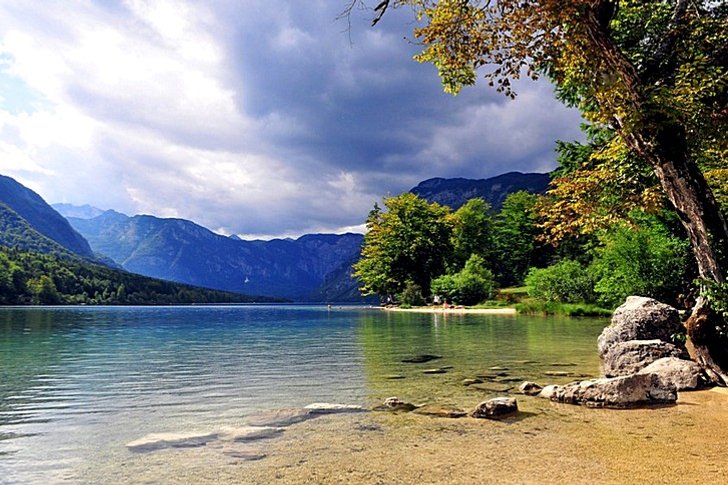
Logarska valley
The protected natural area, surrounded by mountain peaks, stretches in the northern direction of Slovenia for seven kilometers. The waterfalls of Rinka, Suchica and Palenk are located in the Logarska Valley. The choice of tourists offered a lot of sports entertainment. In the reserve, you can go kayaking, skydiving or rock climbing. In the southeast of the valley you can visit the Clemench cave.
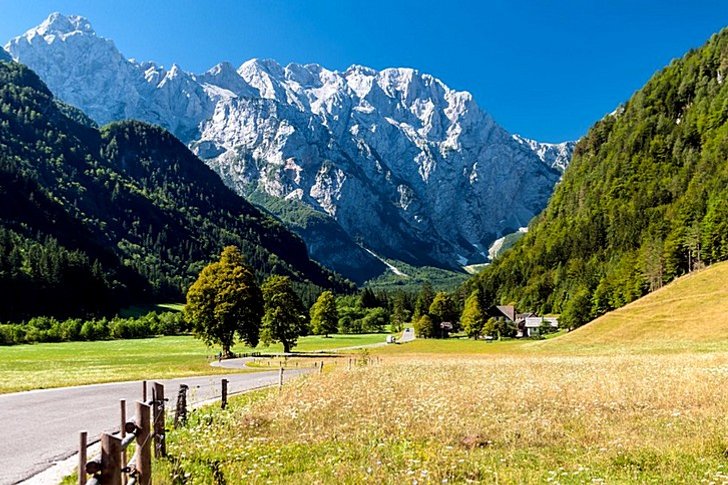
Otočec Castle
The medieval building, built 7 km from the Slovenian town of Novo Mesto, is secluded on a tiny island of the quiet river Krka. There is a hotel in the building of Otočec, excursions are held, and costume balls are held in the evening. The nearby English park is a cozy place for walking. The neighboring thermal springs were the reason for the creation of the Šmarješke Toplice Spa.
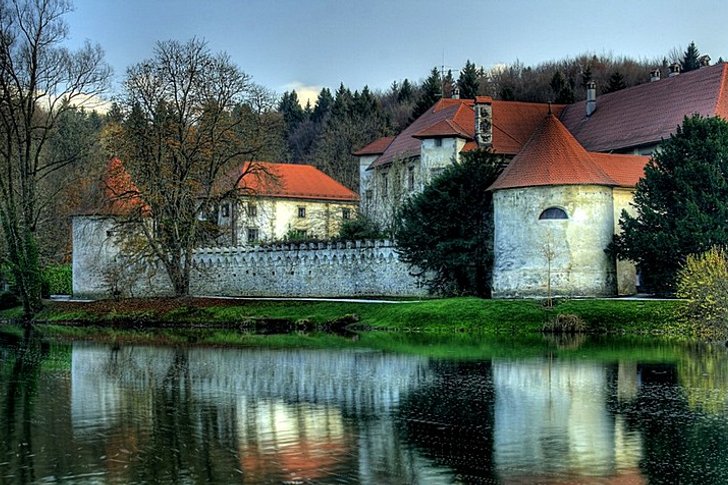
Ski resort Bohinj
Located in an attractive location near the lake of the same name, the ski resort of Bohinj has been attracting fans of winter outdoor activities for many years. The reason for this is the amazing view of the majestic Alps and the high quality of the proposed slopes. The successful proximity to the Triglav Reserve, whose pristine beauty fascinates observers, makes the resort unique.

City of Kranj
Surrounded on all sides by mountain peaks, the city of Kranj is increasingly attracting extreme lovers with its turbulent rivers and high mountain cliffs. And for lovers of contemplation of centuries-old buildings and picturesque landscapes, the city has reserved elegant architecture that combines several styles, and ponds pacifying with their tranquility.
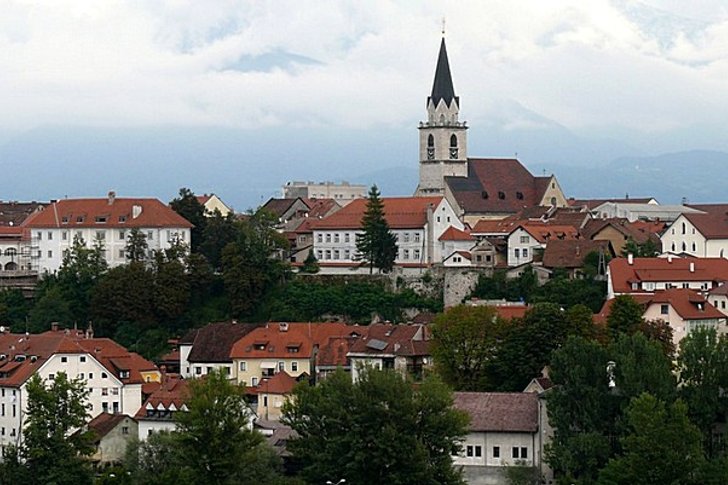
Celje Castle
The location on Grajska Gora of the largest castle in Slovenia made it an excellent viewing platform. The building, which has been preserved since the eighth century, demonstrates its former defensive grandeur - the walls of the fortress reach a thickness of two meters. Thanks to numerous reconstructions in the architectural ensemble of the castle, one can observe a mixture of styles - Gothic, Romanesque, Renaissance.
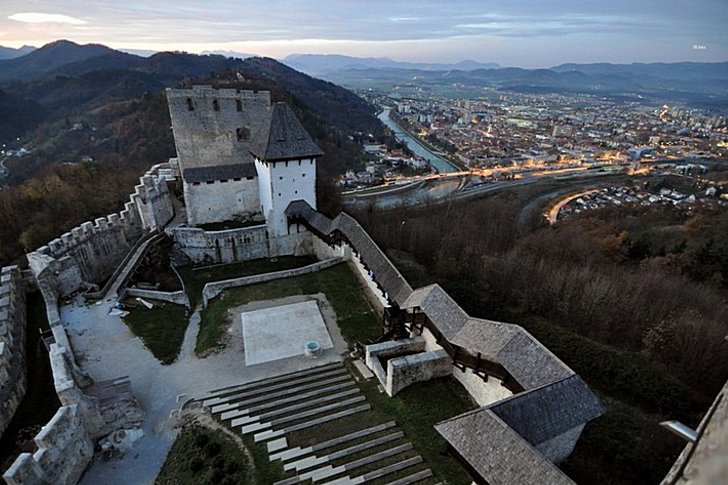
Tivoli Park in Ljubljana
Created according to the plan of the engineer Jean Blanchard two centuries ago and containing two existing parks, Tivoli has become the largest in Slovenia, reaching an area of 500 hectares. The cozy alleys of the park beckon with their beauty. Diverse flower arrangements, unusual statues and exquisite fountains attract lovers of quiet walks.

Franja Partisan Hospital
The partisan hospital was built by the local population under the leadership of Viktor Wojciak. However, the name of the hospital was given by Dr. Frani Boyts Bidovets, who worked here. Safely hidden from the Nazis, the Franja Hospital helped in the recovery of the wounded Slovenian partisans. Becoming a symbol of the partisan movement after the war, it was converted into a museum.
